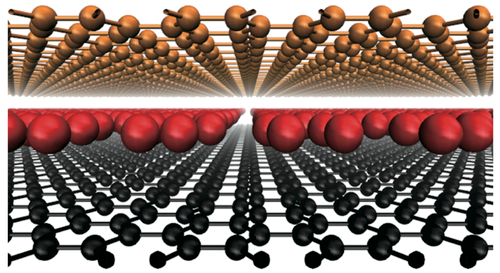Material categorization through mass spectrometry is increasingly concerned with structures on a nanomolecular level. Spherical fullerenes and carbon nanotubes are among the earliest examples of manufactured nanostructures with enhanced mechanical properties. These materials are comprised of lattices of high-strength carbon-carbon bonds and can be categorized as atomic clusters.
Atomic clusters are unique nanostructures comprised of multiple organic or inorganic atoms. Cluster analysis typically categorizes an atomic cluster as a particle of no less than 3 atoms, while larger clusters can comprise up to 1 million atoms. A typical fullerene is comprised of 60 carbon atoms (C60) arranged in hexagonal or pentagonal rings. This sturdy atomic arrangement was first theorized in the 1960s, but cluster analysis researchers did not discover C60 until the ‘80s. This significant academic breakthrough in cluster analysis led to the discovery of electrically conductive carbon nanotubes, with exciting future implications for the electronics and optics industries, with the potential to unlock quantum computing at scale.

Cluster Analysis for Future Material Categorization
Our theoretical understanding of nanotechnology and fabrication is rapidly being proven correct by current technological capacities. Quadrupole mass spectrometers can accurately perform cluster analysis of gas phase nanoparticles by quantifying their geometric mass with distinct sampling inlets. Gas phase clusters, which are fabricated through chemical vapor deposition (CVD) or laser ablation techniques, are focused into the quadrupole’s mass filter to determine the mass spectrum of the material. This methodology enables researchers to plot spectral peaks relating to the mass and concentration of the analyte, and the transmission of ions in the cluster gas flow.
These characteristics are critical for understanding the potential applications of novel nanoclusters and analyzing the outcome of varying process parameters, informing the optimal synthesis conditions for high-purity, repeatable results.
The primary aim of modern cluster studies is to explore the quantum mechanical potentials of new nanoparticle arrangements. Nanocatalysts for a limitless range of applications, or quantumly-entangled computing particles could all theoretically be arranged with distinct topological nanoclusters. These phenomenal applications remain elusive, however, requiring improved understandings of the electromechanical properties of nanoclusters to provide the next significant boost for cluster studies.
Mass Spectrometers for Cluster Analysis
Hiden Analytical is a proven expert in the field of mass spectrometry and analytical methodologies, providing bespoke hardware and unique solutions for material categorization and analysis. We have developed a substantial range of leading quadrupole mass spectrometers suitable for cluster analysis, including:
- EPIC 1000 series mass spectrometer, with mass range options of up to 5,000 amu and a lowest-possible detection yield limit for even large clusters;
- HPR-60 MBMS molecular beam mass spectrometer, with a differentially-pumped multi-stage skimmer inlet for beam sampling at atmospheric pressure.
If you would like any more information about performing cluster analysis with a Hiden Analytical mass spectrometer, please do not hesitate to contact us.

